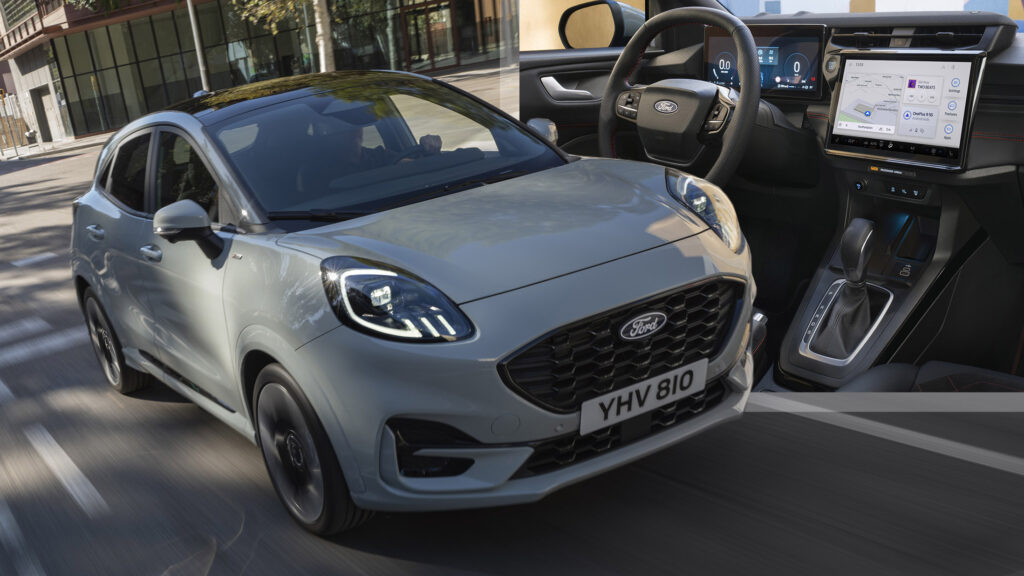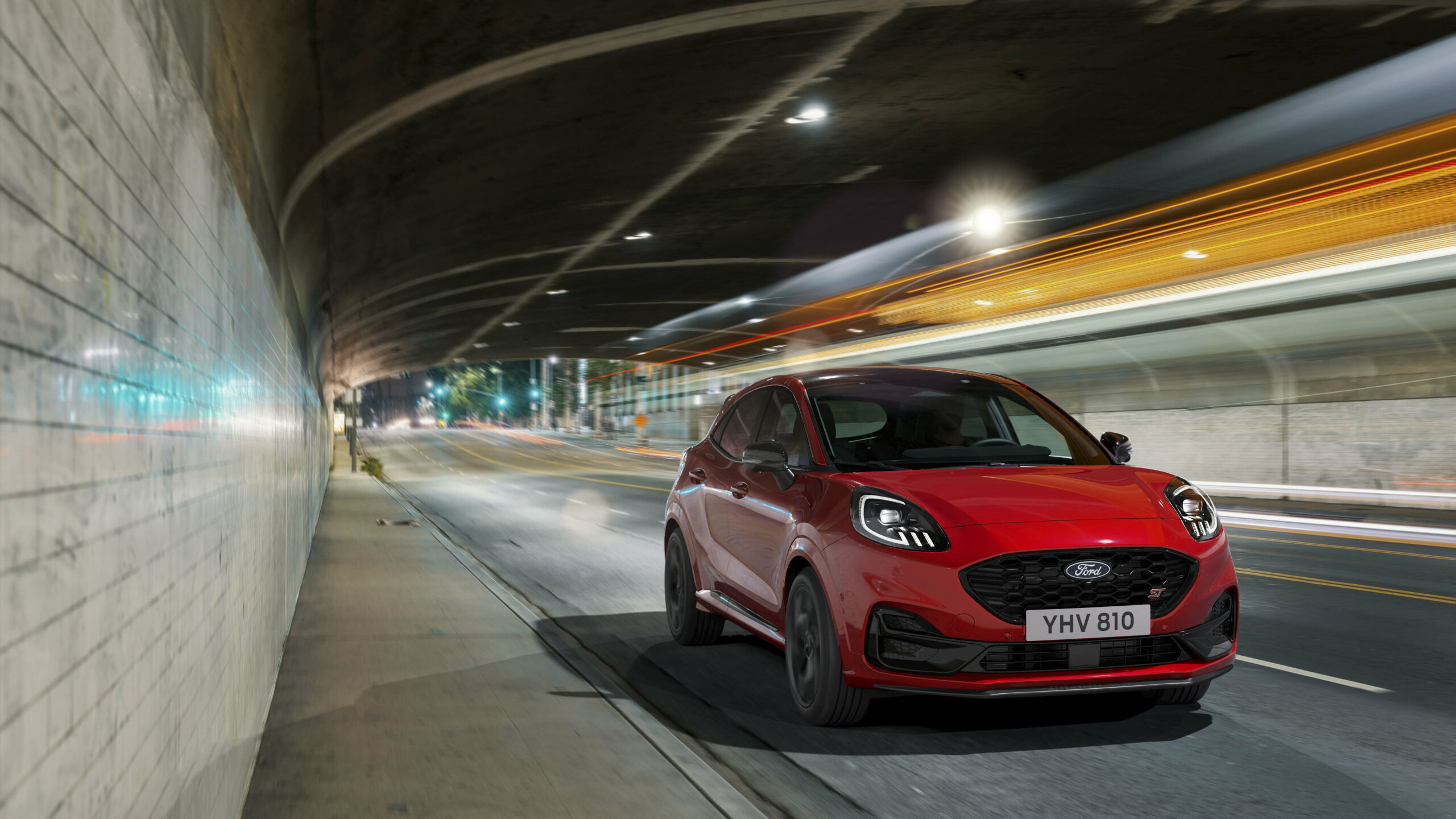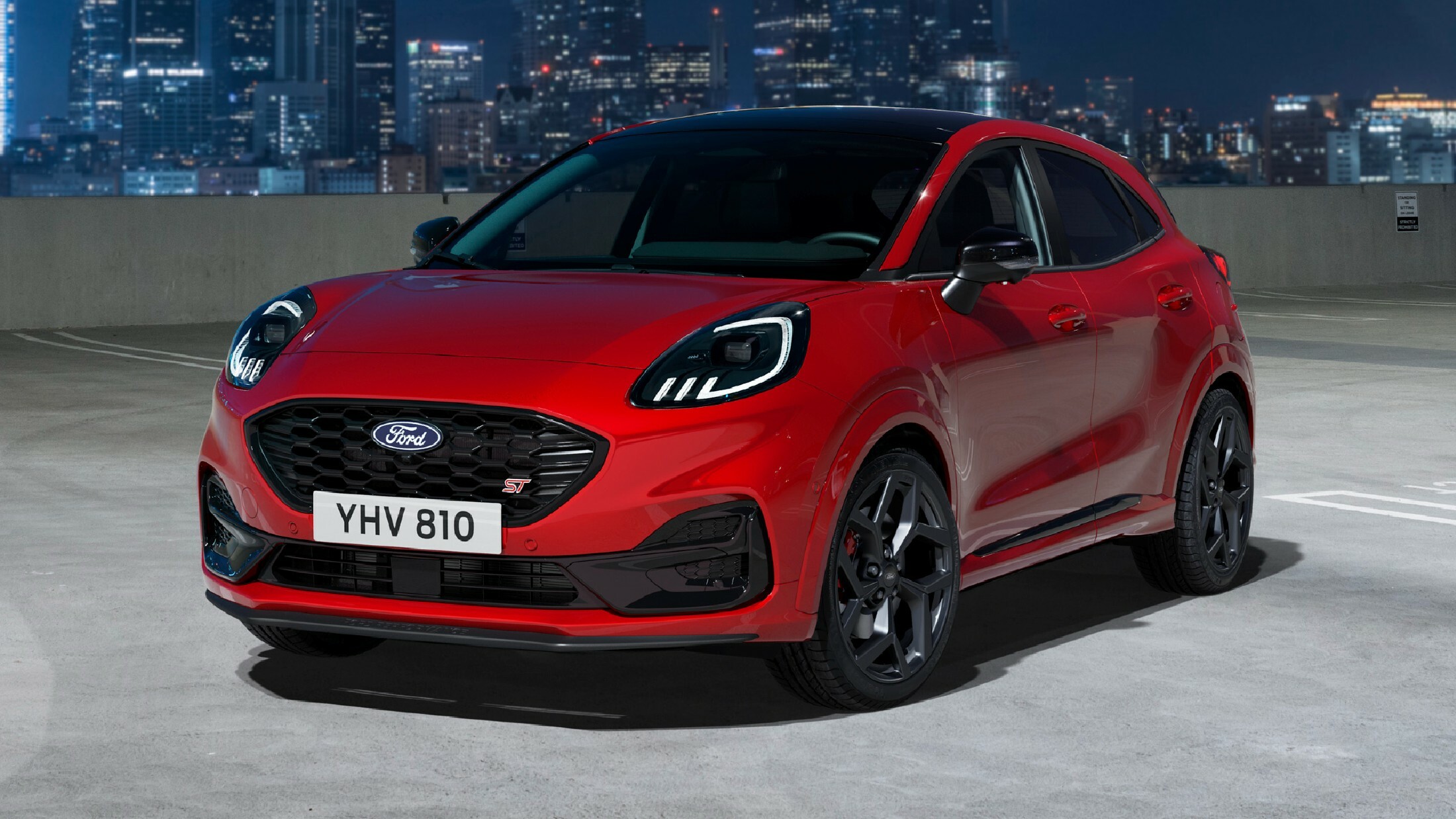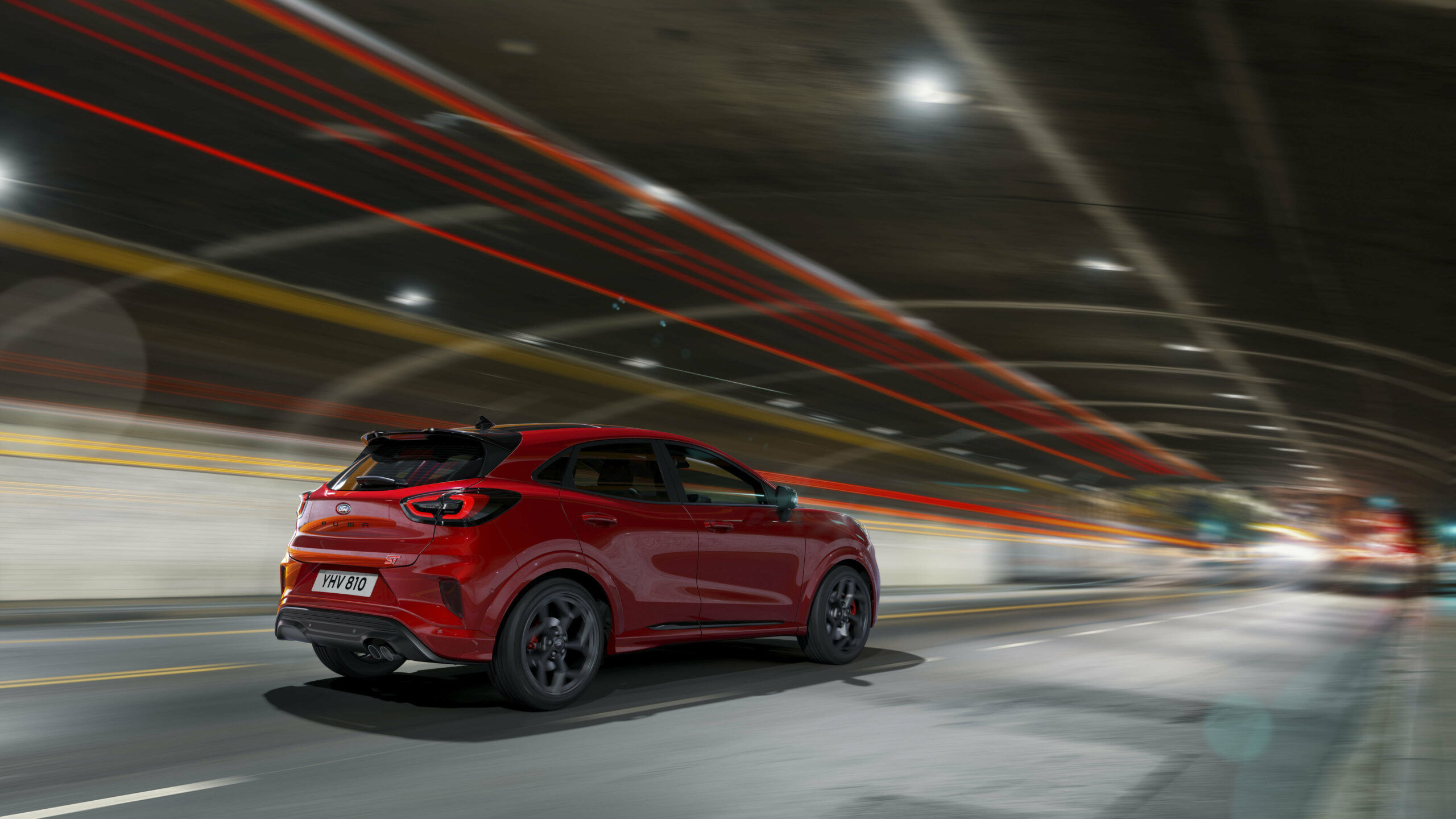Ford has unveiled the much-anticipated facelift for the Puma, which doesn’t look as different as we expected. Nevertheless, despite the limited exterior updates, the small SUV boasts an overhauled digital cockpit and enhanced equipment, along with a revised lineup.
However, the disappointing news is the discontinuation of the ICE-only 1.5-liter engine with a manual gearbox, previously featured in the performance-focused ST model. This leaves the mild-hybrid 1.0-liter automatic as the sole remaining option, available in three power outputs, until the fully electric version debuts later in 2024.
More: Europe’s Ford Kuga Gets American Facelift, Improved Infotainment And Lower Prices
Starting with the interior, which marks the most significant upgrade, the outgoing model’s free-standing infotainment display is replaced by a larger 12-inch touchscreen that dominates most of the center console, integrating Ford’s latest SYNC4 system. Additionally, a new 12.8-inch digital instrument cluster, sourced from the Tourneo Courier, complements the upgraded cabin.
The 5G connectivity and Alexa built-in are welcome additions, but the omission of physical climate controls is something that not everyone is going to like. Finally, the ADAS package has been enhanced with new and improved systems including the addition of Lane Centering and Predictive Speed Assist functions on the Adaptive Cruise Control.
From the outside, the 2024 Ford Puma looks quite familiar, as designers limited their input on the fresh LED graphics for the headlights (optionally available with Dynamic Matrix LED technology). The relocation of the Ford emblem inside the revised grille makes the Puma look more like the discontinued Fiesta, without losing its sporty stance. The facelifted version is offered in Titanium, ST-Line, ST-Line X, and ST trims, while the color palette now includes the Cactus Grey shade among six available shades.
Electrified-Only Powertrain Options
Gone are the days when you could buy the Puma ST with a turbo1.5-liter four-cylinder engine that produced 197 hp (147 kW / 200 PS). The most powerful guise is fitted with a mild-hybrid turbo 1.0-liter three-cylinder mill producing up to 168 hp (125 kW / 170 PS), exclusively mated to the seven-speed dual-clutch automatic.
The rest of the lineup features less powerful versions of the same powertrain with the mild-hybrid 48V system, producing either 123 hp (92 kW / 125 PS) or 153 hp (114 kW / 155 PS) – just like before. However, only the least powerful version is available with a six-speed manual, meaning that Pumas equipped with three pedals and a stick will become rare following the mid-lifecycle update.
Fully Electric Ford Puma Gen-E Coming Soon
Surprisingly, the already confirmed EV version of Ford’s smallest SUV wasn’t unveiled together with the facelift. Instead, Ford said it will follow later in 2024, adopting the Puma Gen-E moniker. Recent spy shots suggest that the zero-emission model will have a fully covered grille and a slightly different bodykit.
Ford didn’t delve into specifics about the specifications, but it’s possible that the zero-emission powertrain could be shared with the E-Transit Courier and E-Tourneo Courier vans, as they are also based on Fiesta underpinnings. These LCV and van siblings feature a single electric motor producing 134 hp (100 kW / 136 PS) and are equipped with a battery pack of undisclosed capacity.
While it remains uncertain if the Ford Puma Gen-E will offer the same output, it will face competition from various EV contenders in the small SUV (B-SUV) segment, including the Alfa Romeo Milano, Jeep Avenger, Peugeot e-2008, Opel Mokka Electric, and more.
All versions of the facelifted Puma will be manufactured at Ford’s Ottoman factory in Turkey and will be available for sale in European markets. However, Australia will not receive the updated Puma, as Ford has decided to discontinue the ICE-powered crossover from its range in anticipation of the Puma-E electric variant, which is set to debut later this year.






























